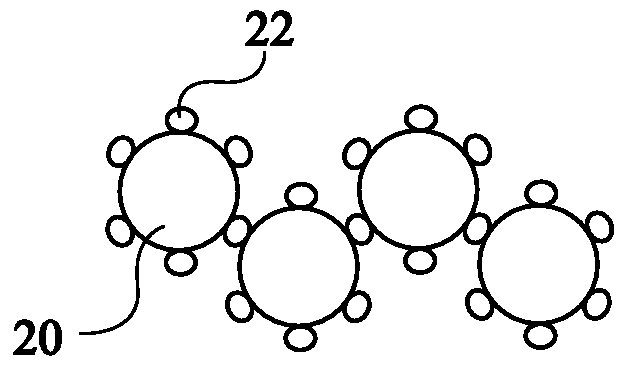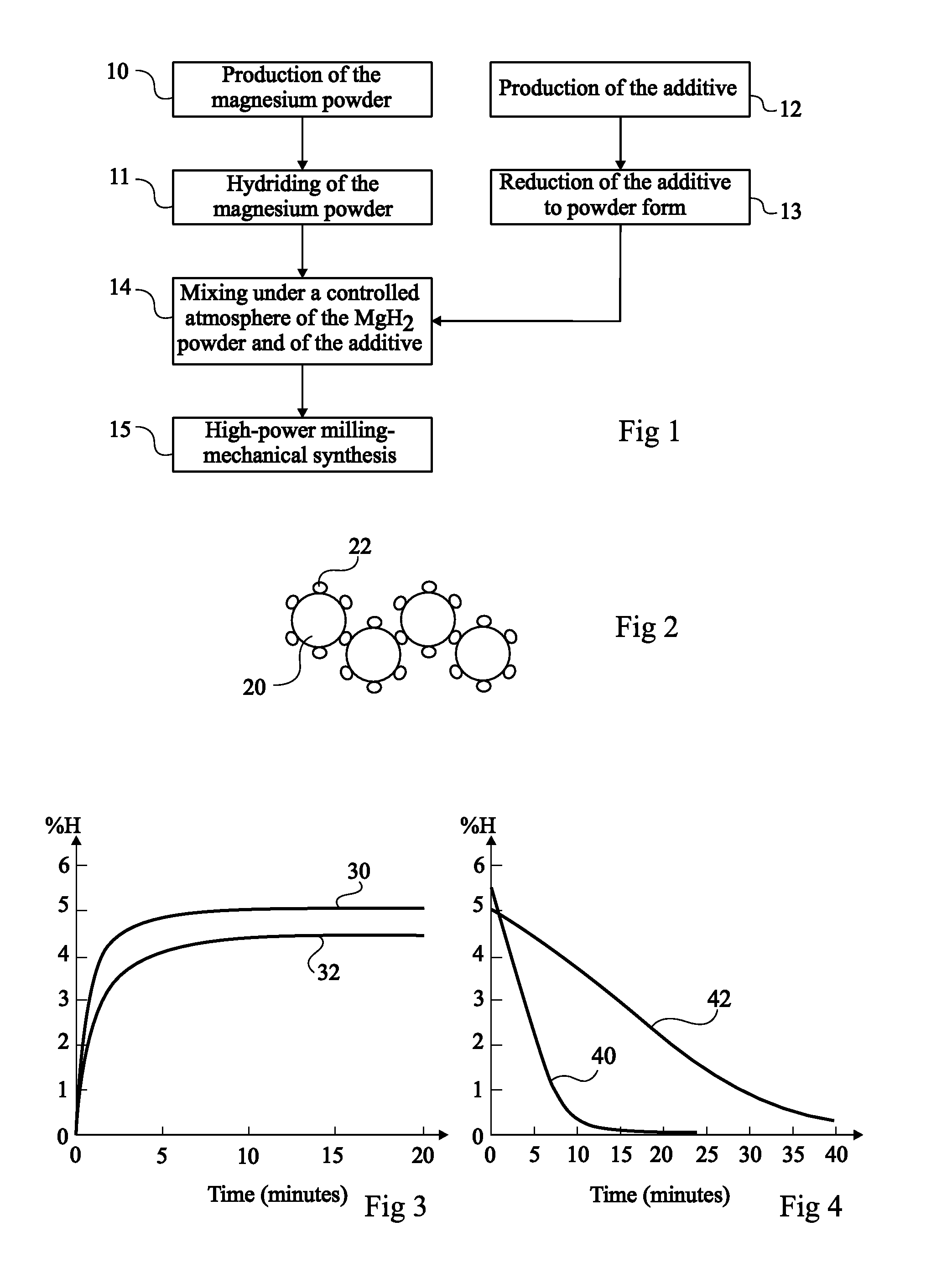Nanocrystalline Composite for Storage of Hydrogen
a technology of nanocrystalline composites and hydrogen, which is applied in the direction of transportation and packaging, coatings, other chemical processes, etc., can solve the problems of limiting the advantages of such a material and the relatively high cost of vanadium, and achieve the effect of improving the absorption and desorption kinetics
- Summary
- Abstract
- Description
- Claims
- Application Information
AI Technical Summary
Benefits of technology
Problems solved by technology
Method used
Image
Examples
first embodiment
[0021]According to the invention, the additive corresponds to an alloy (a1) of body-centered crystal structure, based on titanium (Ti), on vanadium (V), and on another material preferentially selected from among chromium (Cr) and / or manganese (Mn). The alloy (a1) may be of single-phase type (alloy of defined intermetallic compound type) or of multiphase type. Of course, the alloy (a1) may contain other elements in minor proportions.
[0022]According to the first embodiment of the invention, the alloy (a1) complies with the following general formula:
TiaVbMcM′d
where
[0023]M designates chromium, manganese, or a chromium and manganese alloy;
[0024]M′ designates a metal or an alloy of metals, other than Ti, V, Cr, or Mn, for example selected from among iron, cobalt, nickel, or mixtures of these metals;
[0025]a is a number in the range 0.05 to 2.5, typically between 0.1 and 2, for example, between 0.2 and 1.5;
[0026]b is a number in the range 0.05 to 2.9, typically between 0.1 and 2.2;
[0027]c i...
second embodiment
[0048]According to the invention, the additive is obtained by co-fusion followed by a cooling of the following metal mixtures, or by carrying out a mechanosynthesis step by co-milling of the following metal mixtures:
[0049]a first alloy or metal mixture (m1) which may correspond to the first alloy (a1) or to a mixture of the metals forming said alloy (a1), in the proportions of said alloy, these metals being present in the mixture as simple metals (non-alloyed) and / or as metal alloys; and
[0050]a second alloy or mixture (m2), which is[0051]an alloy (a2) comprising:[0052]from 38 to 42 mol % of a first metal M1 selected from among zirconium (Zr), niobium (Nb), molybdenum (Mo), hafnium (Hf), tantalum (Ta), tungsten (W), and mixtures of these metals; and[0053]from 56 to 60 mol % of a second metal M2 selected from among nickel (Ni), copper (Cu), and alloys or mixtures of these metals; or[0054]a mixture of the metals forming said alloy (a2), in the proportions of said alloy, these metals be...
PUM
| Property | Measurement | Unit |
|---|---|---|
| diameter | aaaaa | aaaaa |
| diameter | aaaaa | aaaaa |
| diameter | aaaaa | aaaaa |
Abstract
Description
Claims
Application Information
 Login to View More
Login to View More - R&D
- Intellectual Property
- Life Sciences
- Materials
- Tech Scout
- Unparalleled Data Quality
- Higher Quality Content
- 60% Fewer Hallucinations
Browse by: Latest US Patents, China's latest patents, Technical Efficacy Thesaurus, Application Domain, Technology Topic, Popular Technical Reports.
© 2025 PatSnap. All rights reserved.Legal|Privacy policy|Modern Slavery Act Transparency Statement|Sitemap|About US| Contact US: help@patsnap.com


